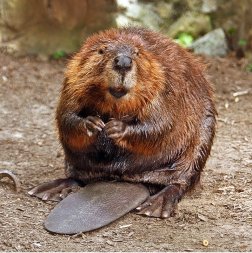Despite all the links of many kinds between us and our animal ancestors, the obvious ways in which we are unique remain striking. Unlike any other species, we talk a lot, we learn by listening, we hold meetings, we make plans, we create complex technologies, and we build organized communities. How did we become so different? How did we come to live in such mini-worlds of our own making, in our cultures?
Here’s an interesting perspective:

To understand the role of culture in human evolution, it is helpful to start with the beaver. Beavers exhibit the remarkable trait of damming up streams to form ponds and then inhabiting the ponds, thereby protecting themselves from predators. This trait is clearly “hard-wired:” If the sound of running water is broadcast to captive beavers, they proceed to pile sticks on top of the speaker. It also exemplifies niche construction: Beavers are adapted to the ponds that they themselves create; they are selected for their ability to produce the niches upon which they depend.
And so it is with the human. The niche to which we are adapted— human culture—is a niche that we ourselves construct; we are selected for our ability both to produce and to inhabit culture-based niches. Since human culture is encoded in and acquired by symbolic languages, this means we have been selected for our symbolic minds in the same way that beavers have been selected for their dam-building skills.
The passage is from a 2003 article on “From Biology to Consciousness to Morality” by Ursula Goodenough and Terrence W. Deacon. There is a lot to take in from these insightful paragraphs. My paraphrase: The characteristics of living things depend on the traits that best contribute to the organism’s capacity to survive and reproduce in its environment. But beavers, like humans, turn this relationship between organism and environment on its head. Instead of adjusting to an environment, we and the beavers create the environment in the first place. We both find the right niche by actually making the niche. To do so, beavers are hard-wired for building dams, humans for using language.
Human examples abound. Every home (maybe every room), every community, every automobile, every organized group is a self-created niche. Perhaps even our clothes. Even our smartphone is a pocket-sized niche of manufactured language and image. And it’s one we keep contributing to, to make it the way we like it.
Deacon and Goodenough’s paragraphs are the kind of application of natural selection theory that shows us not only how our traits may have evolved but what our essential and surprising characteristics are in the first place.
